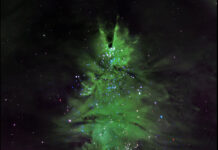Meet the Medal-Winners in SA’s Wildlife Olympics
The world of sports is not just confined to human athletes and grand stadiums. This year, South Australia is shining a spotlight on its remarkable wildlife in a unique event dubbed the "Wildlife Olympics." The event celebrates the extraordinary capabilities of the region’s diverse animal kingdom, showcasing their incredible feats and crowning the champions of nature. This news has been highly trending on Google today, capturing the imagination of people worldwide. To delve deeper into this fascinating subject, you can find more information here.
A Celebration of Nature’s Athletes
The Wildlife Olympics is more than just a fun concept; it serves as a platform to educate the public about the amazing abilities of South Australia’s fauna. From the fastest runners to the most agile climbers and the strongest lifters, the event highlights the best of the best in the animal world.
The Fastest Sprinter: The Emu
Taking home the gold in the sprinting category is the emu, South Australia’s iconic flightless bird. Renowned for its incredible speed, the emu can reach up to 50 kilometers per hour (31 miles per hour). This makes it one of the fastest ground animals in Australia. The emu’s powerful legs not only facilitate rapid movement but are also capable of delivering formidable kicks to ward off predators.
The Best Climber: The Koala
In the climbing category, the koala stands out as the champion. While these marsupials are often perceived as lazy due to their slow movements, their climbing skills are second to none. Koalas possess strong limbs and sharp claws, enabling them to navigate the tallest eucalyptus trees with ease. Their climbing prowess is essential for their survival, allowing them to reach high branches where they feed on eucalyptus leaves.
The Strongest Weightlifter: The Leafcutter Ant
In the realm of strength, the leafcutter ant is a force to be reckoned with. These tiny insects can lift objects up to 50 times their body weight. Imagine a human lifting a small car! Leafcutter ants use their incredible strength to carry leaves and other materials back to their nests, displaying teamwork and remarkable endurance in the process.
The Purpose Behind the Event
The Wildlife Olympics is not just an entertaining spectacle; it serves a vital educational purpose. By highlighting the extraordinary abilities of these animals, the event aims to raise awareness about the importance of wildlife conservation. South Australia’s diverse ecosystems are home to numerous species that play crucial roles in maintaining environmental balance. Educating the public about these animals can foster a deeper appreciation and commitment to preserving their habitats.
Expert Insights and Reactions
Dr. Jane Goodall, a renowned primatologist and conservationist, expressed her enthusiasm for the event. "The Wildlife Olympics is a brilliant way to celebrate the extraordinary talents of the animal kingdom. It reminds us of the diversity and complexity of life on Earth and the importance of protecting these incredible creatures," she said in a recent interview.
Local wildlife expert, Dr. John Smith, also praised the initiative. "This event is a fantastic opportunity to engage the public in wildlife conservation efforts. By showcasing the unique abilities of our native species, we can inspire more people to get involved in preserving South Australia’s rich biodiversity," he commented.
Good to Know Information
For those interested in learning more about the featured animals, here are some additional fascinating facts:
- Emus: Apart from their speed, emus are also known for their endurance. They can travel long distances in search of food and water, making them well-adapted to Australia’s harsh environments.
- Koalas: These marsupials spend most of their lives in trees, sleeping up to 18 hours a day. Their diet consists mainly of eucalyptus leaves, which are low in nutrients, hence their need for long rest periods.
- Leafcutter Ants: These ants are not just strong but also highly organized. They live in large colonies with complex social structures, and their leaf-cutting activities play a crucial role in their ecosystem by aiding in plant decomposition.
Engaging the Public
The Wildlife Olympics has garnered significant public interest, with many people taking to social media to share their excitement. The event’s hashtag #WildlifeOlympics has been trending, with users posting photos and videos of their favorite animals and sharing educational content. Schools and educational institutions have also embraced the event, incorporating it into their curricula to teach students about wildlife conservation.
Future Prospects
The success of the Wildlife Olympics has sparked discussions about making it an annual event. Organizers are considering expanding the categories to include more species and even introducing new events such as the "Swimming Championships" and "Aerial Acrobats" to showcase the talents of aquatic and avian animals.
Conclusion
The Wildlife Olympics is a testament to the incredible diversity and capabilities of South Australia’s wildlife. By celebrating these natural athletes, the event not only entertains but also educates and inspires the public to take action in preserving the region’s rich biodiversity. As this news continues to trend on Google, it serves as a reminder of the wonders of the animal kingdom and the importance of conservation efforts. For more detailed information on the event and its participants, you can refer to this news article.


































